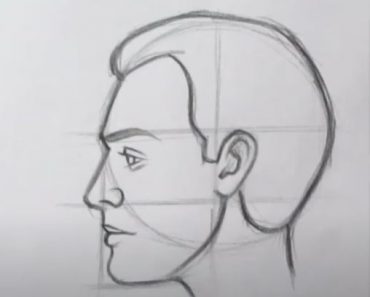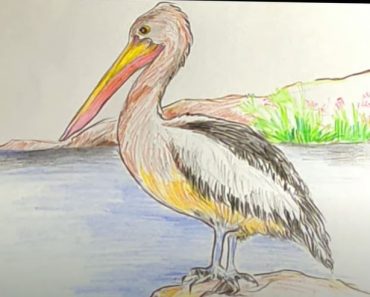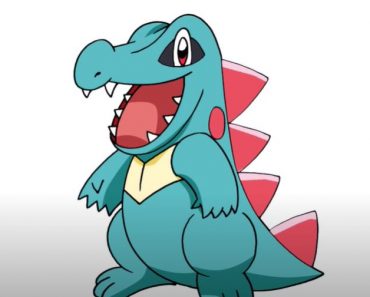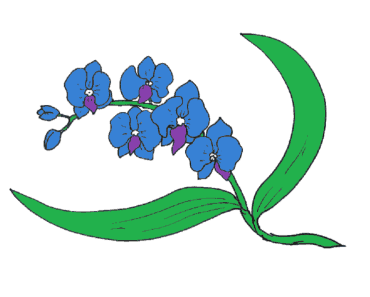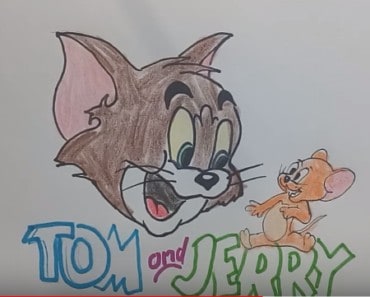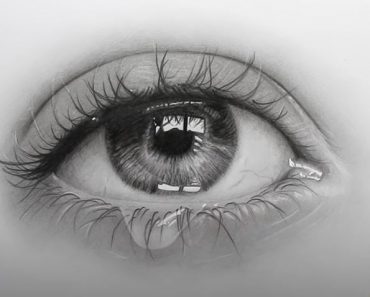How to Draw a Realistic Koala by pencil with this how-to video and step-by-step drawing instructions. Easy animals to draw for beginners and all.
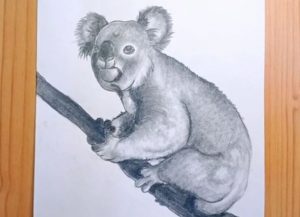
Please see the drawing tutorial in the video below
You can refer to the simple step-by-step drawing guide below
Step 1
Start by drawing two circles – a large circle to form the koala’s belly and a smaller circle (half the diameter of the larger circle) to form the head. These two circles should be separated as shown. Draw the outline of the bow arm away from the bottom of the top circle. Then, the lower part of the arm will point down to the bottom circle, as shown.
Step 2
Gently draw a line through the center of the top circle to help bring out the contours of the face. The line should be inclined (about 30 degrees). In the middle of the bottom half of the divided face, draw a square oval nose. This should be perpendicular to the line and slightly below it. Draw two eyes on each side of the nose with the top of the eye on the line. Both eyes are slightly pinched towards the nuclei (both sides towards the center of the face). Now we turn our attention to the bottom circle – we need to draw the back leg. This operation starts at the center of the large circle and arcs around in the shape of an egg within the circle, as shown. Finally, we need to start drawing the tree the koala is clinging to.
Step 3
Erase the guide through the center of the head and segments of the circle guide as shown. Add ears, but sketch lightly as the ears will mainly be defined by the hair texture later on. Add a few details around the eyes, nose and chin. Also add two toes on the back foot.
Step 4
The drawing is all about the koala’s fur. Koalas have a very unusual coat that looks very shaggy – the hairs don’t fuse together like other animals and it requires a slightly different technique. It took me a while to figure out the easiest way to achieve a decent look (I actually had to restart the drawing completely!), but I figured it out. Start by shading a base layer as shown. These next few steps are to complete the tone of the fur coat – the next steps will be to paint the fur texture. Note the darker areas around one side of the face, the mid-body area, and around the tip of the hind legs.
Step 5
There are two steps here. First, finish shading the base layer of the koala’s bottom half – note that the belly area (the area within the large circle from the border) is much lighter than the upper areas. Second, start smoothing the shadow with a cotton pad/tissue and a Q-tip (you can see that I started doing this in the top half of the drawing). This is similar to some of the steps in my shark tutorial.
Step 6
Finish smoothing the shadows on the bottom half of the drawing. Then start drawing the hairy texture of the face. The hairs on the sides of the face are not well defined so you don’t have to worry too much about technique – I just shaded in slightly serrated lines for effect. Draw the hair darker around the edge of the cheek while leaving some space between the shoulder and the left cheek (the koala’s right cheek) for later emphasis. At the same time, leave the chin and two stickers on both sides of the nose.
Step 7
Now let’s start drawing a slightly more obvious hair texture on the face. To do this, simply draw thin, parallel lines in curved rows on the face. The right cheek (the left cheek of the koala) is shaded fairly smooth and doesn’t need much hair (but leave it a little rough – don’t smooth it unless it really needs to).
Step 8
In this step, I just added some slightly darker hair on the top of my head. As you can see, the hair in the middle and top of the face is starting to look a bit rough so in the next steps I will smooth it out.
Step 9
When smoothing hair texture, use a cotton pad/tissue or Q-tip as you would with a regular shade. The difference is that you want to follow the particles (in the same direction) of the hair and you want to do it very lightly. This is because we don’t want to completely smooth the graphite – we want to retain some of the hair detail, but only remove the rough. If you stroke the shade at an angle perpendicular to the hair and apply a lot of force, it will completely remove the hair texture.
Step 10
The ears require the “traditional” feathering technique that most furs require. Draw long, wavy strands with a dark pencil (2B-4B) consecutively at the base of the ear and make the strands slightly different lengths. The hair above the ears should be slightly upward, and the hair that is facing down should hang downwards. In this step, I also shaded the upper body slightly darker by adding another layer of drop shadow.
Step 11
The outer part of the ear is much lighter and requires a much thinner hair texture. Create curved banana-shaped hairs that grow from the first half of the ear. The trick is not to brush too much with these hairs – on koalas, the outer ear hairs are mostly white, so you may have to use an eraser if the pencil becomes too thick. In this step, I have also started drawing the texture of the body hair. This is an easy technique and doesn’t really take long, even though it may seem like it. See the next step for an explanation of the process.
Step 12
Drawing feathers is very simple – you just draw short, thin lines in the same direction. The trick is to not arrange them in a straight line. You want to arrange them in rows of jagged edges so they look well dispersed.
Step 13
The direction in which you draw the hairs on the koala’s body is important as it is the primary way to draw the koala’s shape. This chart shows the direction the feathers around the arrows will point. Refer to it throughout the process.
Step 14
Continue drawing the hair texture around the torso. Make sure that you continue to draw the hairs in the direction outlined in Step [12]. Notice how the feathers around the tip of the hind legs are quite dark and how the feathers around the back of the abdomen are rather light. Make sure you capture these tones in your drawing.
Step 15
Continue adding hair textures. The tones should mostly go through the basic shading you did when you started painting, but you can dark/lighten the hair tone by making the hairs darker/lighter or by making the hairs darker/lighter. the hairs are thicker or less dense (put them closer or further away).
Step 16
The fur around the koala’s lower part is much smoother and more ordered than the rest of the drawing. There are three rows of roughly equal width that arc around the bottom. Notice the thin bands of light at the bottom of each row (below the ends of the hairs that make up the rows) and the slightly darker, more obvious strands of hair dispersed along the rows.
Step 17
Continue drawing details of the feathers and feathers of the hind legs as shown.
Step 18
This is an important step where we add some dark patches all over the coat. These little patches add depth to the fur coat – so far, only small hairs have been drawn out and it looks like the fur coat isn’t very thick. Koalas actually have a pretty thick coat, so we need to add this depth. Dark patches of fur are drawn in thin, jagged bands and are mainly located on the left side of the hind legs and in the area under the chin. In this step, I also drew hair on the fingers and toes. Koalas have weird hands/feet covered with the same fur as the rest of the body, so use the same technique.
Step 19
Finally, now we draw the details of the eyes and nose. Up to this point, the koala looks rather odd with these missing details. They’re pretty simple to draw – the nose is basically a shaded block with a little gradient on top and the eyes are just an oval pupil with defined outlines and some shading on the bottom half. Don’t forget to shade your chin.
Step 20
Now the koala is done, but we have to draw some trees. You don’t want to draw the whole tree because the koala should be the focus of the drawing, so I’ll just draw the part of the tree where the koala is hanging. Start by creating long straight lines in the direction of the tree. Make some lines closer together and some further apart to create some highlights.
Step 21
To draw a tree texture, start by drawing long, thin lines in the direction of the tree. Then add some contours of the ‘square’, angled bark blocks and add some darker, thicker lines here and there. Finally, shade the area, but leave thin patches of light along the edges of some segments of the bark and in other areas.
Step 22
Here you can see that I added some bark detail to the tree texture.
Step 23
Now I have shading in the texture. You can see how it’s not uniformly shaded – that’s intentional and keeps the texture looking raw and organic.
Step 24
This step is optional – in the previous step, I felt the tree looked a bit too pale, so in this step I added some shadows to the tree texture to reduce most of the highlights. Personally, I prefer this look, but the look of the tree texture in the previous step is also very nice. If you want, you can extend the tree texture further to the right – in this drawing I just made the tree texture fade out because I didn’t want too many “trees” in the image. This section concludes the tutorial – I hope you enjoyed it and found it useful.
